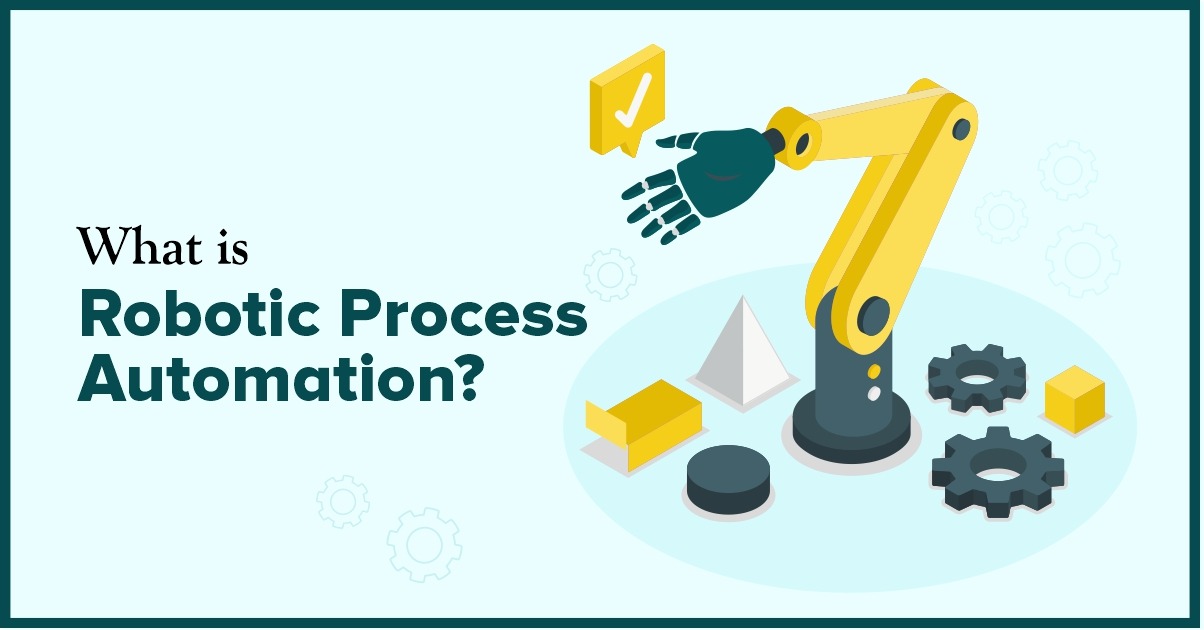Role Of Robot Process Automation(RPA) In Insurance Sector
The insurance companies are shifting towards the use of new methodologies to make their process simpler and have a competitive edge in the industry. The large volume of data can be analyzed in a short span of time with the use of these advanced technologies. Apart from the use of technologies such as chatbots and artificial intelligence, the insurance industry is also using Robotic Process Automation (RPA) by utilizing intelligent robots to enhance the efficiency of operations. The use of RPA in the insurance industry can help the companies to link disparate legacy systems, without any requirement of coding, which enables the companies to operate faster and reduce labor costs to a great extent. RPA works by integrating artificial intelligence robotic assistant to reduce the burden of employees by integrating computer commands, and other non-core tasks that earlier used to take a lot of time and efforts of employees. Earlier, the employees used to gather information from diverse sources and documents and copy that information in multiple systems manually for processing claims. This was a time-consuming process that led to frequent delays and errors. The use of RPA claim processing has made the process easier and faster by gathering and moving the information in multiple systems with just one mouse click. The process has become standardized with the use of robots which help in increasing the efficiency of employees by increasing their speed with the help of robots to carry out activities. The chatbots can easily interact with diverse applications such as ERP systems, databases, service desks, and other applications. The large volume of data can be analyzed in a short span of time with the use of artificial intelligence-based RPA and translate the data into important insights to take necessary actions. This technology has simplified the business analytics tasks as the workflows can be tracked at each step which enhances the process efficiency by reducing the workload of employees. The insurance company can easily find important information from the recorded data, such as exceptions, transactions processed, claim processing records, etc. It has also helped the insurance industry to reduce the errors in data entry by automating the data entry process which reduces the need to do the data entry process manually. Artificial Intelligence-based robots have the ability to perform a number of tasks, that includes, gathering datasets on various aspects, feeding the data to applications, controlling desktop-based applications, and manipulate the data as and when needed. The policy cancellation process has improved significantly with the use of RPA technology as it can be done with just one click, which, in turn, eliminates the need to carry out the whole process manually with the use of traditional methodologies. Robot process automation (RPA) has enabled the insurance industry to integrate this technology with the traditional technologies to carry out the process seamlessly. RPA enabled image classification techniques can be used by the insurance industry to carry out the process of image and text analytics and handle customer queries in an efficient manner. RPA has the ability to empower insurers by reducing the need to perform monotonous clerical jobs and build a high-growth business by optimizing various tasks and costs of the operations. This technology has the ability to perform repetitive tasks quickly and accurately which was not possible earlier by manual labor. This helps in creating more creative value to the organization by reducing the burden of these tasks from the employees. RPA has simplified the process of underwriting which requires evaluation of risks associated with a particular task. This task is carried out by gathering information from varied sources and analyzing the risks associated with it. Earlier, this task used to take various steps which took almost 2-3 as it was carried out manually. This use of RPA has enabled the insurance industry to automate the data collection process, leading to a reduction of time for underwriting and pricing of products by populating multiple fields in the internal systems. With the use of artificial intelligence-based robots, the process of policy administration and servicing has been simplified by linking all the tasks of an insurer. The insurers don’t need to involve vast navigation across systems as RPA automates the transactional and administrative process, which includes, risk capture, accounting, credit control, regulatory compliance, etc. This enables the insurance companies to improve computer experiences and reduce operational errors. The process of form registration has also been completely automated with the use of RPA which requires half the workforce than what was required earlier to carry out the task. The automation of various back-end tasks has enabled the back-office staff to shift to front-office tasks and focus on customer-oriented demands and generate profitable growths. The process of finance and accounts can be carried out with just a few clicks with the use of robot process automation technology by automating the daily bank reconciliation process and minimizing the expenses related to varied transactions and policies. The insurance industry is becoming dynamic with each passing day as the insurers are continuously challenged by changing demands of the customers in a competitive environment. The back-office tasks need to be kept in place to achieve profit targets. RPA has enabled the insurance companies to meet the challenging demands of the customers by automating transaction processes and other back-office tasks and increasing the efficiency in operations. This technology has helped to create a productive marketplace by helping the insurers to deliver top-notch customer service.









